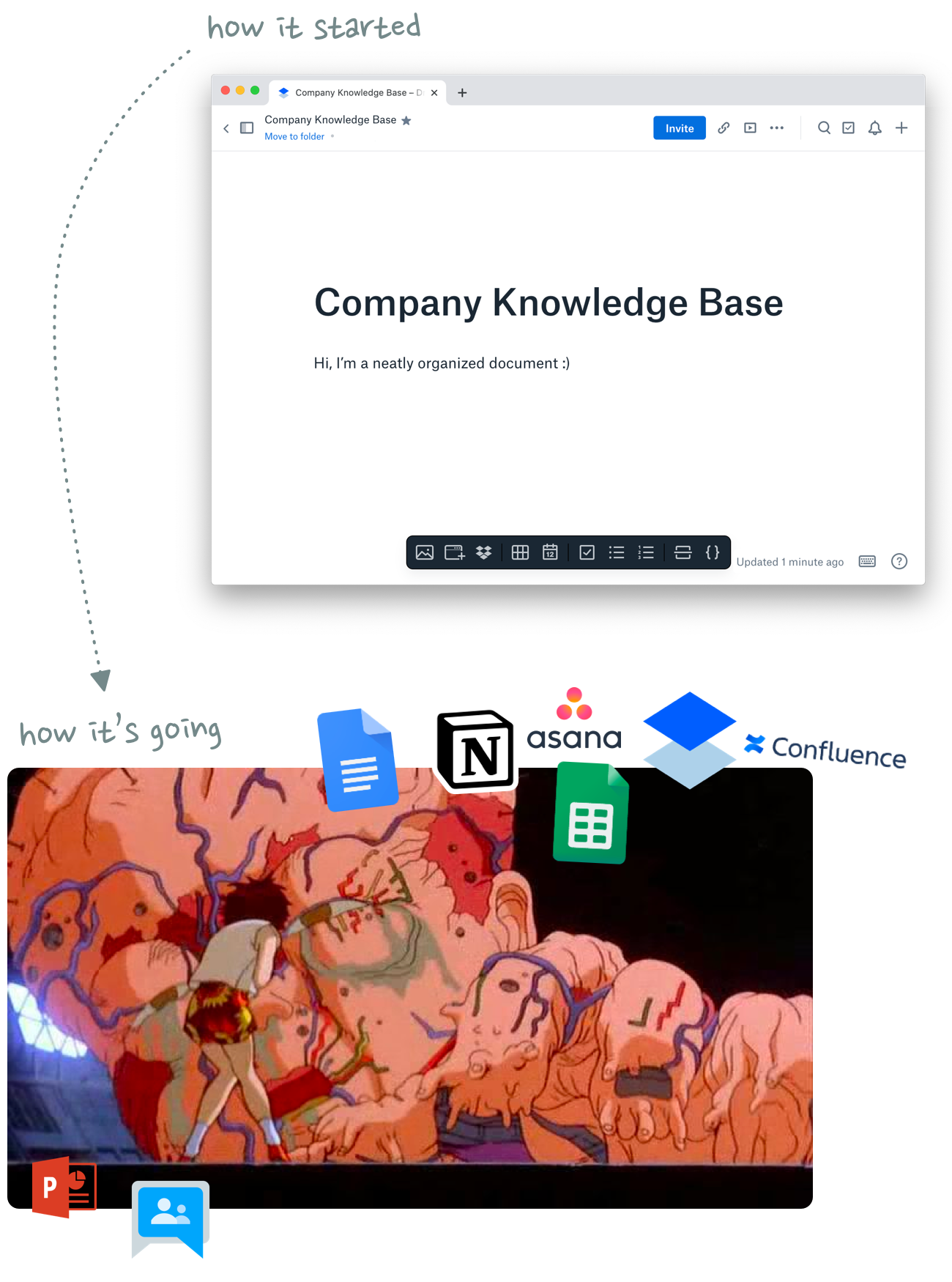What’s the digital equivalent of sticky notes?
01 Hey
This was originally supposed to be a blog post about Hey. I wanted to write a longer essay about Basecamp’s new email tool and test if the app actually lives up to its hype.
After playing around with it for a few weeks, my conclusion is this: Hey’s most interesting aspect is not its radical approach to email – but its fresh approach to note taking!
We have long treated notes as a distinct silo in our productivity stack, when we should have integrated them right into our workflows instead. While email might need an overhaul, I see a way bigger opportunity in rethinking digital note taking.
So instead of my Hey review, let’s talk about notes and my idea for a radically new kind of note taking app.
02 A Closer Look at Notes in Hey
Hey has two interesting notes features.
The first are so-called Thread Notes. These are basically emails to yourself within an email thread that only you can see. You might have seen similar internal notes features in shared inbox tools like Zendesk or Front. Thread Notes in Hey are effectively the single player version of those.
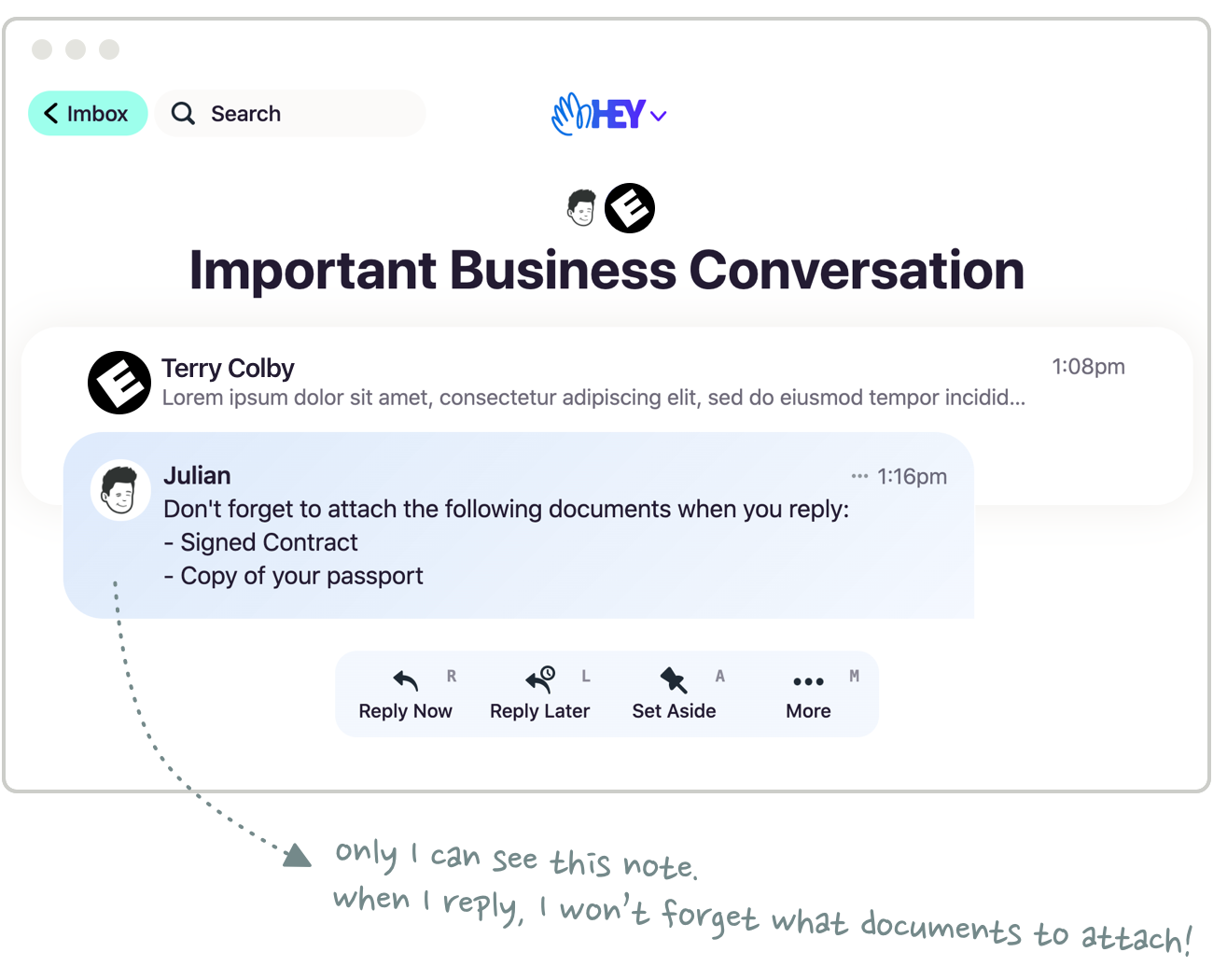
I’d find Thread Notes super useful in combination with snoozed emails: “Show me this email again in [insert time] and remind me of [insert note]”
This feels like a way better workflow than adding a note in a separate reminder, to-do, CRM, or note taking app.
a) Because there’s no need for context/app switching.
b) You might not even remember that you took a note related to an email when it resurfaces in your inbox a few weeks later.
To-do and reminder apps (and calendars!) work great for tasks that are tied to a specific day or time. But many tasks – and especially notes – are not dependent on time. Their relevance is based on other trigger points. Only when certain conditions are met, should these notes resurface: “If [insert event] is true, then show [note]”
In the case of our email, the note becomes relevant in [insert snooze time] or whenever the recipient replies to the email thread. The fact that many tasks have external dependencies (which are usually linked to an email thread) is one of the reasons I believe that your email inbox should also be the place where you manage your to-dos. You shouldn’t need a separate to-do app.
—
The second note feature in Hey are Inbox Notes.
As the name suggests, these notes are added to individual emails in your inbox. Similar to Thread Notes, you can use them to quickly jot down things you need to remember, but they also help you to highlight specific emails.
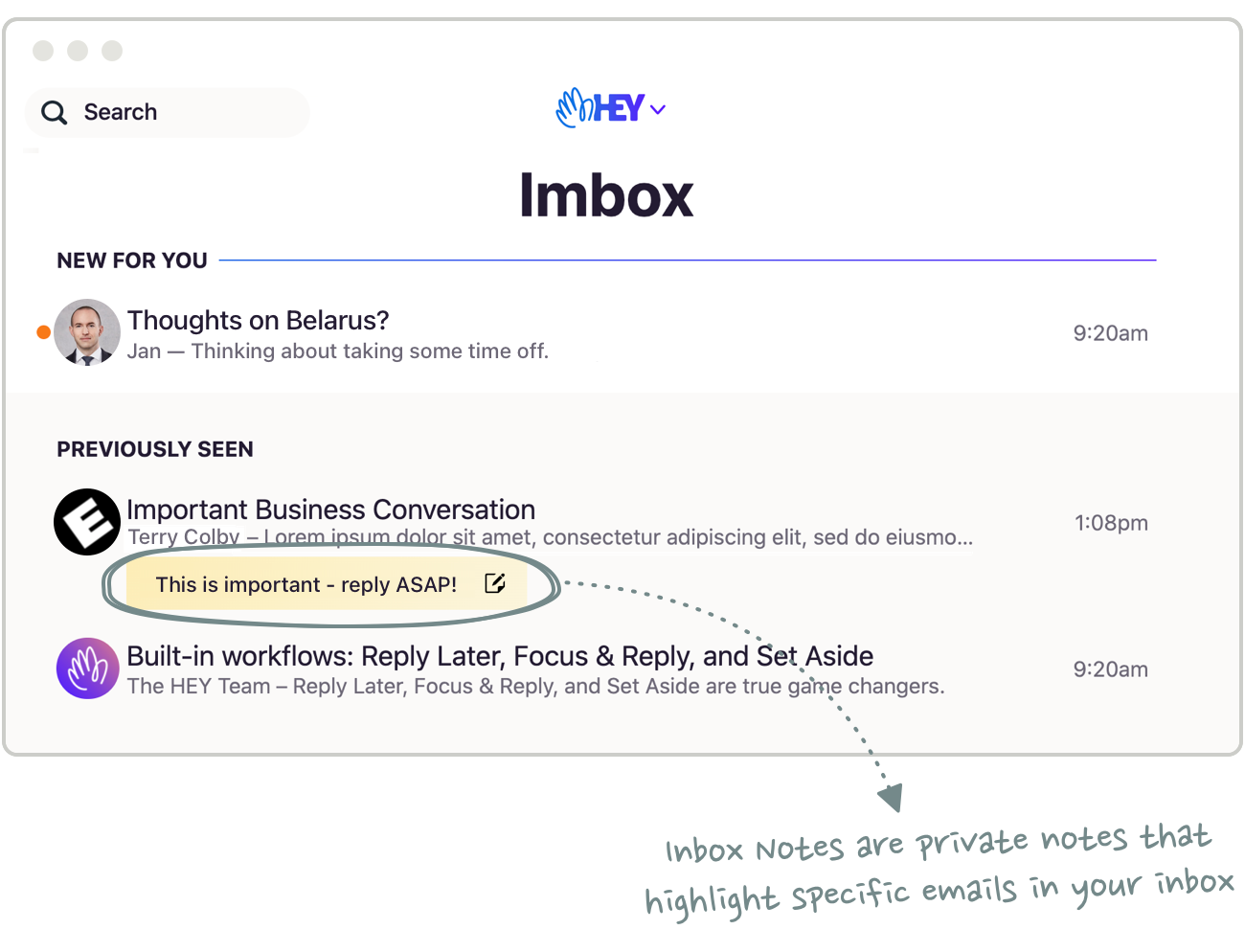
Thread Notes and Inbox Notes feel similar, but they serve two slightly different use cases. Thread Notes work more like reminders (“Don’t forget X when you reply”), whereas Inbox Notes feel more like bookmarks that highlight the most important messages in a long list of emails.
Together, they remind me of one of my all-time favorite note taking tools: Post-it Notes.
03 Post-it Notes
I’m a huge fan of physical note taking and there are two writing tools that I use every single day: A physical notebook (for longer thoughts, including first drafts of my blog posts) and post-it notes (for all kinds of quick notes).
(Disclaimer: When I say “post-it notes” I’m referring to all types of sticky notes, not just those sold by 3M.)
Post-it notes serve two of the same functions that Hey’s note features offer: highlights and reminders.
One of the reasons I still read a lot of non-fiction in physical book form is because it’s easier to bookmark and annotate passages that I quickly want to find again later. Similar to Thread Notes, sticky note bookmarks help me highlight the most important items in a long list.
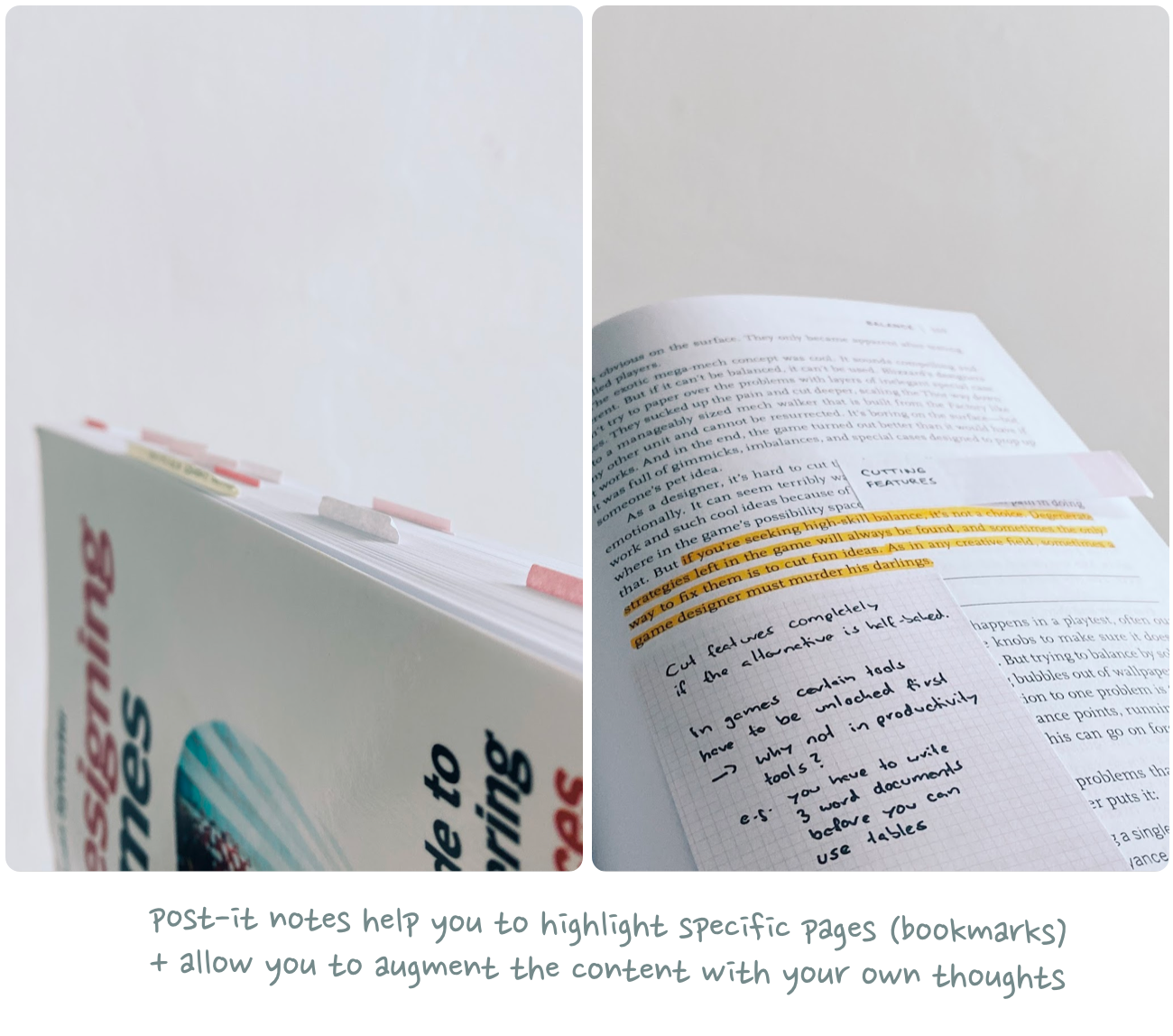
Apart from helping you find important passages in a book later on, sticky note bookmarks also allow you to add additional context to the section you highlighted (e.g. *why* you bookmarked a particular section or thoughts you had about it).
You could write down notes like this in a separate notebook, but then you’d lose the connection to the source they are based on. What makes post-it notes so interesting is the spatial relationship between the notes and their respective context.
It’s this spatial relationship that also make post-it notes great reminders.

Post-it note reminders are similar to Hey’s Thread Notes in that they are triggered not based on time but on events that don’t have a (forecastable) deadline. They are essentially like notifications that appear when you look at specific objects.
A post-it note on your front door, for example, is like a notification that pops up when you’re about to leave the house: “Before you go, don’t forget to [insert note]”. A shopping list on your fridge is a data request notification that surfaces when you are most likely to have new items to add to your list.
Together, post-its essentially become a notes layer that augments the real world. Instead of a physical notebook that lists all your notes and tasks in chronological order, post-it notes are scattered around your house but tied to specific places or objects where they are most relevant.
The question is: Why isn’t there a digital note taking tool that works like this?
04 A Spatial Note Taking Layer
There are dozens of great note taking apps out there: Evernote, Google Keep, Apple Notes, Workflowy, Notion, Roam … the list goes on and on. Every one of these tools has its own unique angle on note taking, but they all have one thing in common: They are stand-alone apps.
This strikes me as suboptimal. Neither the creation nor the consumption of notes should be treated as separate workflows.
As John Palmer points out in his brilliant posts on Spatial Interfaces and Spatial Software, “Humans are spatial creatures [who] experience most of life in relation to space”. Post-it notes are so powerful because they have a spatial relationship to their context.
Many notes shouldn’t live in a dedicated note taking app that you explicitly have to open and search. Notes should emerge automatically whenever and *wherever* they are most relevant.
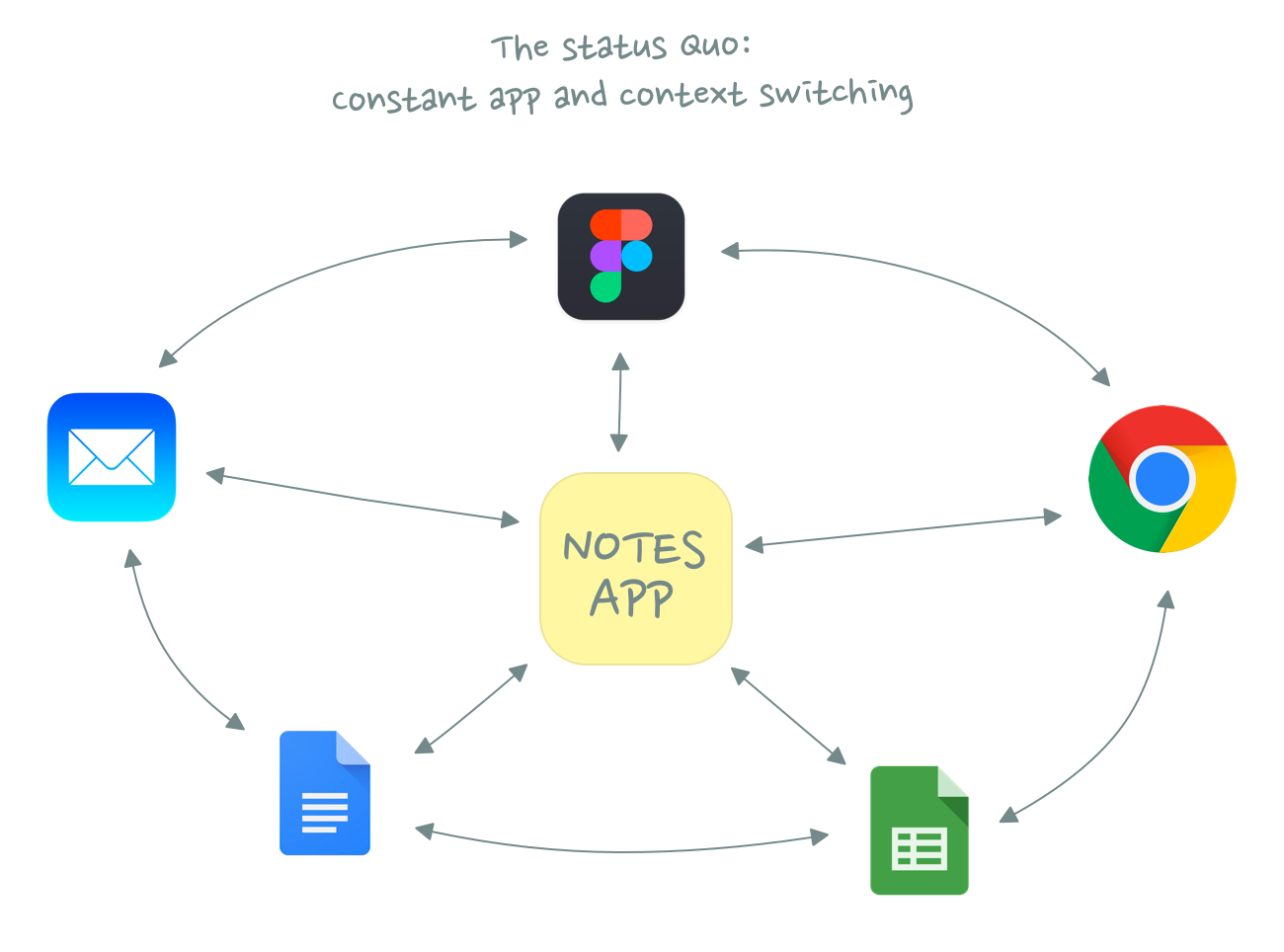
As long as note taking remains separated, users constantly have to switch back and forth between different applications, which is not ideal. It reminds me of the recent discussion around productivity and collaboration – which have historically also been treated as two separate, isolated workflows:
The platonic flow of productivity should minimize time spent not productive, with collaboration as aligned and unblocking with that flow as possible. By definition, any app that requires you to switch out of your productivity app to collaborate is blocking and cannot be maximally aligned. It’s fine to leave your productivity app for exceptions and breaks. But not ideal when working.
The same applies to notes. You shouldn’t have to switch apps and context to take or consume notes. It should stay within the same workflow!
(Side Note: You could argue that note taking is essentially single-player collaboration where you communicate with your future self – but that’s a whole new discussion I’ll save for another blog post.)
Natively built in note taking features like email notes in Hey feel like a good step in the right direction – but email is just one distinct silo in your productivity stack. Imagine you had to buy different sets of post-it notes for every single room or object in your house.
What we need instead is a spatial meta layer for notes on the OS-level that lives across all apps and workflows. This would allow you to instantly take notes without having to switch context. Even better yet, the notes would automatically resurface whenever you revisit the digital location you left them at.
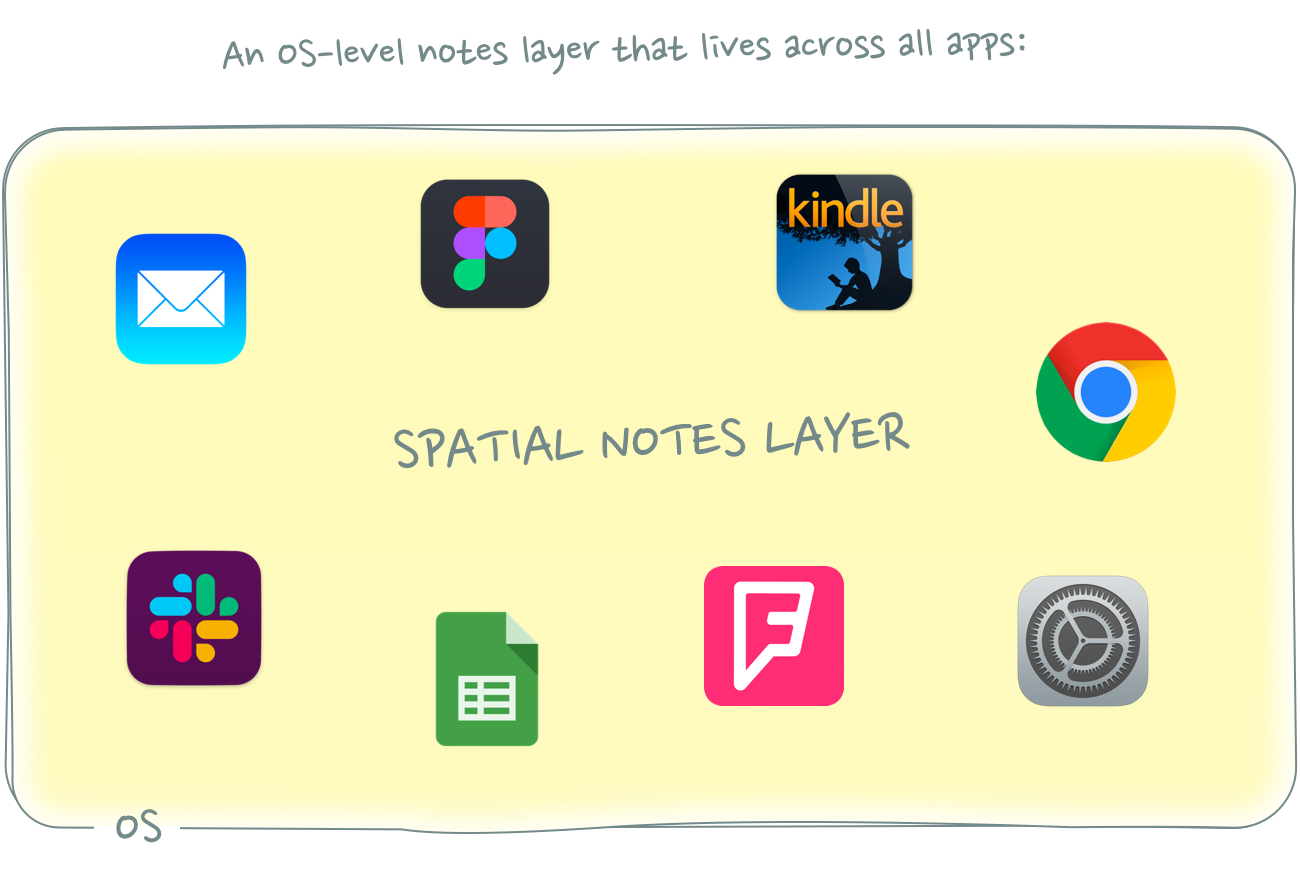
Let’s look at a few examples.
05 Examples
One use case that immediately came to mind when I thought about spatial notes is bookmarking.
Most of us don’t use just one bookmarking app for everything. We use different bookmarking apps or bookmarking features depending on the type of object we want to save for later: Podcasts are usually saved in a dedicated podcast app, for example. Articles are bookmarked in Pocket, books on Goodreads, songs on Spotify, places on Foursquare, products on Amazon … you get my point.
Bookmarks are great to remember *what* you want to revisit later – but not *why* you saved something in the first place. I would love to be able to add notes to my bookmarks directly in each app so that I have some context on why these objects are important when I return to them later.
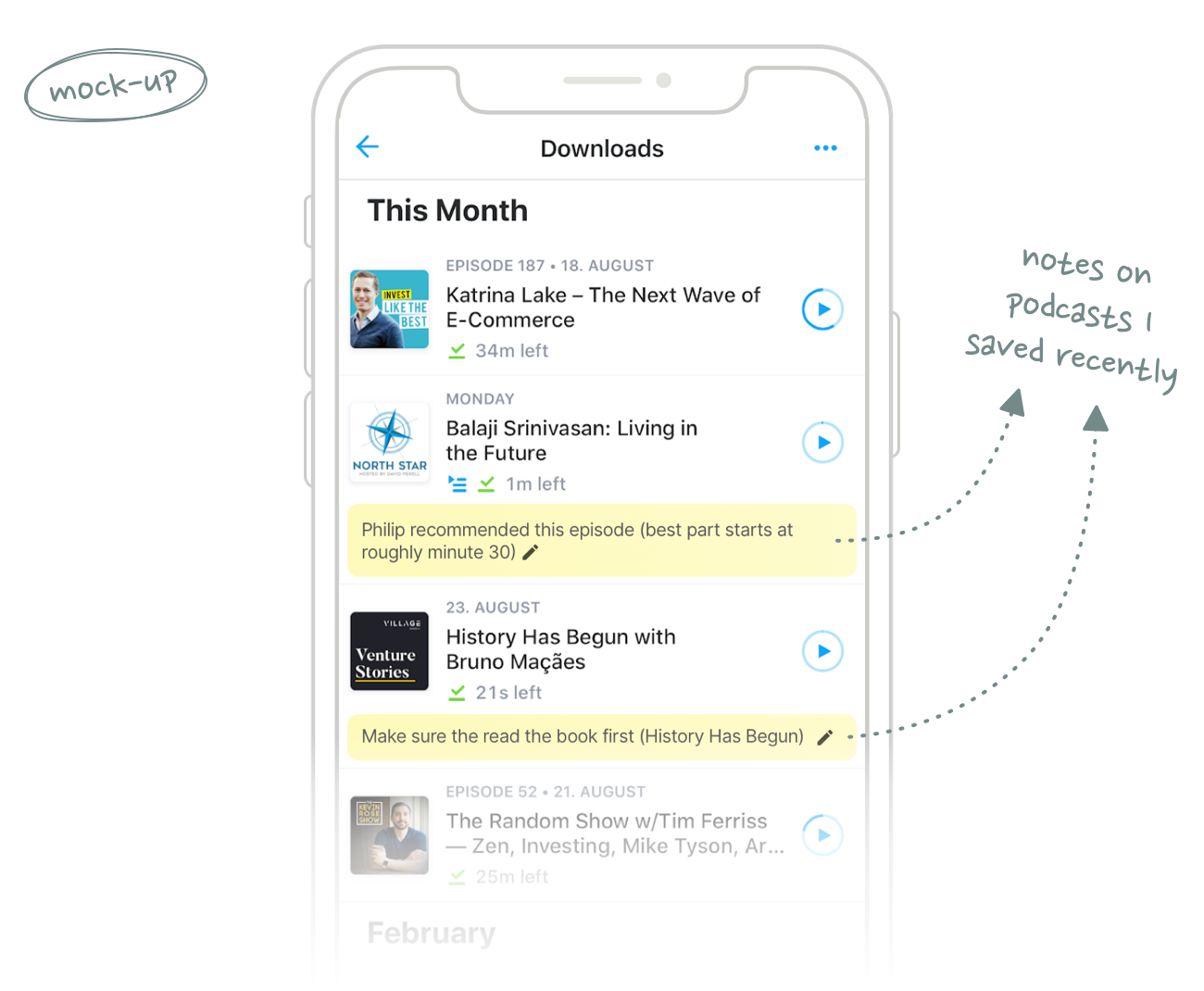
Ideally, these notes wouldn’t just show up in the one place I originally left them, but across all apps and websites that reference the (semantic) object I bookmarked. A note attached to a book I want to read in Goodreads, for example, should also emerge when I see that book in my Amazon search results – or when someone mentions it in my Twitter timeline.
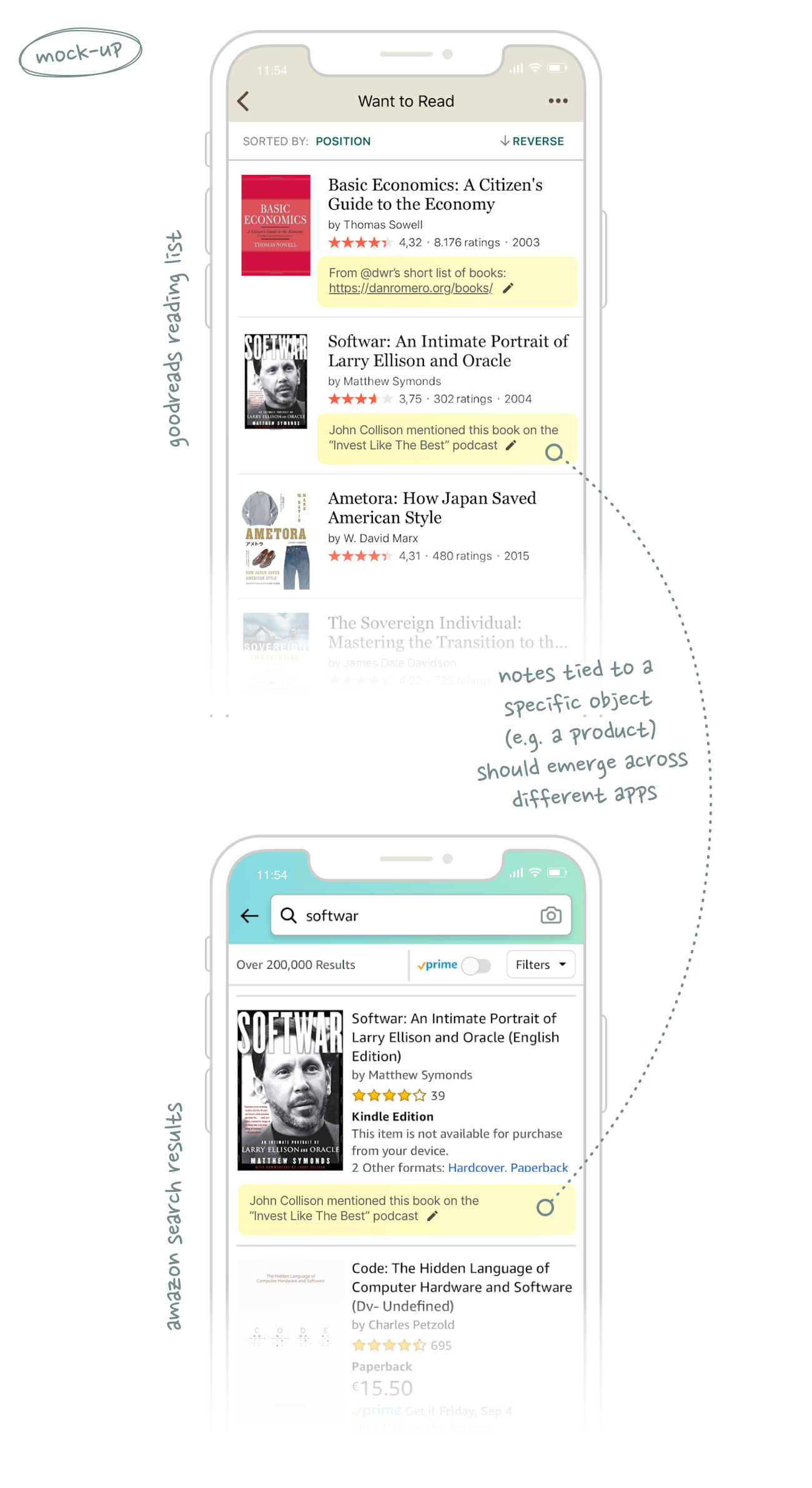
People are a similar type of semantic object you could tie notes to. Instead of a stand-alone CRM tool, you would leave a note attached to a person straight from your current workflow (e.g. your email client). That note would then automatically re-surface whenever the person it references becomes relevant again:
- When you’re in an email thread with them
- When you add them to a calendar event
- When you’re visiting their LinkedIn page
- When you look them up in your phone book
- etc
—
Another use case for spatial notes are instructions on how to use specific software features or improve workflows. These could be quick reminders to add permissions to new calendar events or to use Filtered Views in Google Sheets. You could also use these notes to train users on keyboard shortcuts.

You could imagine employers shipping corporate laptops with pre-installed notes to make it easier to transfer (previously tacit) knowledge and thus improve the onboarding process for new hires.
06 Closing Notes
I could go on and on about potential use cases for a spatial note taking app. The possibilities are endless – but blog posts shouldn’t be. So I’ll end things here.
A final note before you leave: I’d love to hear your thoughts on this whole idea. What would you use a spatial note taking tool for? Let me know what you think in this Twitter thread!
Thanks to Kevin Yien, Matthew Achariam, Max Cutler and Nathan Baschez for their detailed feedback on drafts of this post.
If you liked this post, you might also enjoy the following essays:
